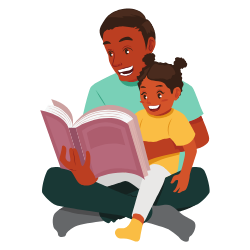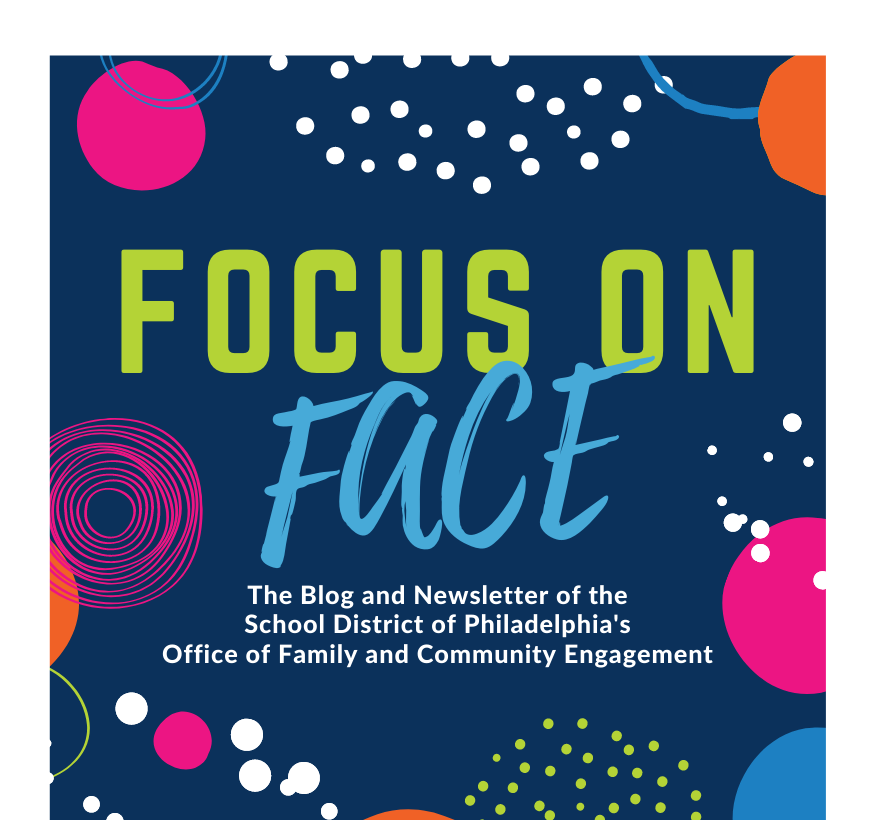
عربي • 汉语 • Español
If someone asked you what fluency is, what is the first thing you think of? The way that literacy and fluency are defined can vary depending on where people are from and their educational backgrounds. Literacy skills may be taught differently in each country. These differences can pose a challenge for multilingual family members to know and understand the ways that literacy skills are taught in American schools. We sat down with some English Language Arts (ELA) Curriculum Specialists at The School District to gain more information about how multilingual families can understand literacy and reading levels taught in district schools.
Firstly, we have to know what fluency is in order to know what teachers are looking for when they measure fluency. Yonaira Rodriguez, ELA Curriculum Specialist defines fluency as accurate, smooth reading with expression at a proper pace. You are reading neither too quickly nor too slowly. You want to be able to read at an appropriate pace so that you can make sense of the text by grouping words together, pausing at commas, and making full stops at periods. A visual way to understand fluency would be to read the following sentence: “The cat is big” group together as opposed to “The…cat…is…big.” with frequent pauses that would break up the understanding of the text.
Students are evaluated and measured on their reading skills using what is called a reading level. Traci McCabe, Director of Literacy for K-12, says that a student’s reading level is a score that presents a general idea of where a student is in connection to reading ability when compared to his/her grade-level peers. Parents will see a student’s reading level in the report card. However, it is important to note that the reading level is an estimate rather than a set definition of a student’s overall reading ability. Lauren Sturner, ELA Curriculum Specialist shares that the purpose of the reading assessment is to help teachers have more information about the student and the student’s reading ability. This can help inform which content areas students need to improve. Also, oftentimes there are books and series of books associated with different reading levels. While this can be a good starting point, Ms. McCabe points out that the reading level is not meant to be a limitation or a boundary that is set in which children can only read books on their reading levels. Ms. McCabe encourages that all students should read a variety of books and especially read books that pique their interests.
In terms of the logistics of the reading level assessment, our ELA curriculum specialists broke down more information about the assessments so that parents can be informed. In the lower grades, typically the primary grade teacher will administer the reading assessment. If not the primary grade teacher, then in upper grades, the ELA teachers will administer the assessment. Students usually know ahead of time that they will be assessed. In K-8, the assessment is given four times throughout the school year, and for high schoolers, the test is given three times. For 11th and 12th graders, the test is optional. The students are usually assessed once they get back from summer break, either at the end of September or the beginning of October. Students also have the ability to retest, and teachers can negate the previous scores in order to give students opportunities to test again.

There may be various obstacles for multilingual students or English-language learning students during this assessment. English learners follow the Keystone and PSSA accommodations–they can have time extensions as well as the usage of dictionaries. Students can also test with their ESOL teacher and in smaller settings. If students are not on grade level, schools have different interventions in place that will allow the child to get additional support. There are adaptive programs, one-on-one tutoring, small group instruction, supplemental materials, and more. Along similar lines, if students are above grade level with their reading levels, they will get additional enrichment activities as well.Many parents may wonder how to prepare their child for this reading assessment.
Shirl Ishmael, ELA Curriculum Specialist says that being informed is the best start for a parent. Know what your children need to know, what they are learning, and how you can support them at home. Support your child to eat a good breakfast and get a good night of sleep as well. Ms. McCabe says to keep a list of questions that you can ask your child to help your child comprehend the text. Also, communicate with your children about what they are learning at school, and make sure that your children talk to you when there are issues or concerns. Overall, there is no standard way to prepare for the test. Ms. Rodriguez says that the best ways to prepare are to enhance a love for reading overall! Read to your child, expose your child to as much reading as possible, build home libraries–the best way to prepare is to give general exposure to books and reading. Allow your students to read things that they like! Additionally, Ms. Rodriguez shares with parents that sometimes there is a certain misperception that literacy in the first language will impede the child from learning and being fluent in English. However, Ms. Rodriguez encourages parents to encourage their children to know their home language–promote the biliteracy, and allow the child to grow in both languages!
For teachers and school staff in supporting multilingual students with literacy: be sure to build background knowledge and learn about the child and the child’s culture. Try not to negate the child’s background and experiences, but rather, have the students teach one another about each individual’s culture. The students can be assets to one another and educate each other about their family, language, and cultural backgrounds. As much as possible, try to include books and give students books that promote diversity and can allow for a student to see oneself in the book as a mirror or a window. Honoring the culture and background experiences of a child even through the books they read can greatly support a child’s love for reading and growth.
For families, teachers, school staff, and students alike—try not to shut down any desire to read and grow. Reading leads more reading; give exposure and encouragement to your students as they grow in fluency, literacy skills, comprehension, and a love for reading as well!
Check out these additional helpful resources!
- Free Library of Philadelphia: Check out your local Free Library, get a Library Card, and borrow books for free!
- Free Library Libby App: Borrow books digitally with your Library Card
- Hoopla: Digital Media Resource Library
- Parent Curriculum Resources: Can provide further resources for parents to understand what their children are learning in literacy at school
- Power Library: Look for titles of books and electronic books; Can get in with Library Card Number (Not available in other languages)

